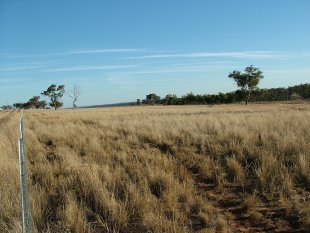
Plains grass
SCIENTIFIC NAME: Austrostipa aristiglumis
CATEGORY: C3 perennial
IDENTIFICATION TIPS
- Warm season native perennial grass growing in tufts up to 2m tall.
- Leaves are up to 6mm wide and 40cm long, rolled in the sheath. The sheath and leaves are ribbed and generally hairless
- It has a stiff membranous ligule and thickened auricles
- Seedhead is an open panicle to 55cm long, with spreading, whorled branches. Large spikelets have a twice-bent 3-4cm long awn
- Flowers in spring and summer
CLIMATIC & SOIL REQUIREMENTS
- Widespread in the eastern half of the plains and extending to the slopes
- Common on heavy clay soils; it prefers good moisture, high fertility, and neutral to alkaline soils
- Particularly frost sensitive, but drought tolerant
GRAZING & NUTRITIONAL VALUE
- Low to moderate grazing value
- Digestibility ranges from 39.5-59.1%, but old hayed-off material is as little as 30.0%
- Crude protein 3.8-12.2%
MANAGEMENT STRATEGIES
- Provides a competitive perennial pasture which is resilient to weed invasion
- Provides moderate quality feed for livestock when vegetative; low quality when flowering
- More readily grazed by cattle than sheep
- Seeds can cause injury to stock, especially sheep. Heavy grazing or slashing at flowering will reduce seed contamination, but may reduce the populations over time
- Tolerates heavy grazing over summer and autumn, but occasionally resting at flowering will aid persistence
SIMILAR PLANTS
- Tall speargrass (Austrostipa bigeniculata) is quite similar, but has an awn 4-5.5cm long
- Other tall Austrostipa species have a similar appearance

(Plains Grass habitat: J Kidston)

